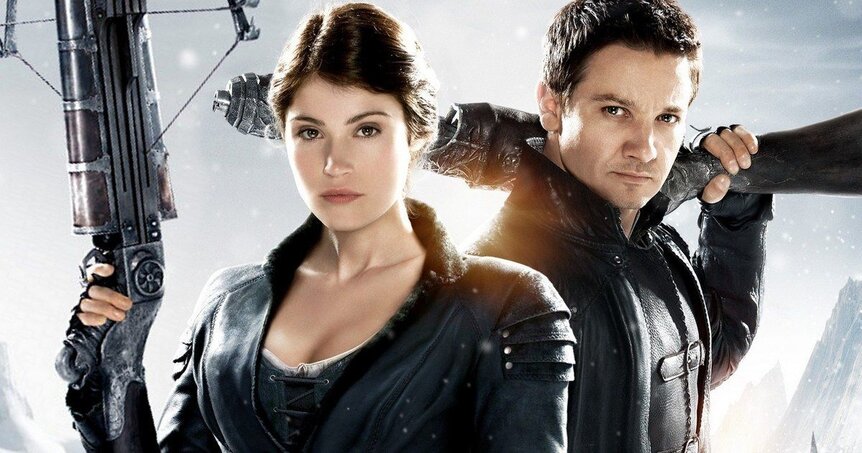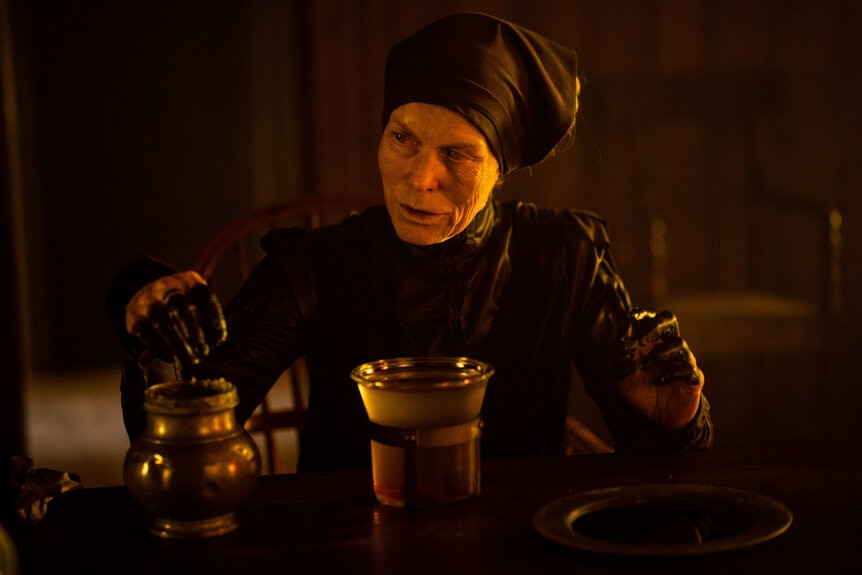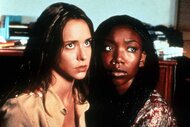Create a free profile to get unlimited access to exclusive videos, sweepstakes, and more!
The Dark History Behind the Fairy Tale of Hansel and Gretel
Before you catch Hansel & Gretel: Witch Hunters on SYFY this weekend, know the history.

When it comes to the fairytale canon, "Hansel and Gretel" belongs to what I think of as the B-list. Not B-list in terms of quality, of course, but B-list in terms of visibility. The most beloved adaptation is Engelbert Humperdinck's 1893 opera Hänsel und Gretel, which RKO Pictures later turned into a stop-motion-animated film in 1954. Against the full force of the Disney animated canon and its marketing apparatus, that can feel a little quiet.
(Incidentally, the House of Mouse has tried to make something of "Hansel and Gretel" — by handing it off to Tim Burton. The ensuing adaptation, which featured Burton's signature art style and an Asian-American cast, was aired exactly once on the Disney Channel in 1983.)
If we move into the horror space, "Hansel and Gretel" fares better. There were three horror adaptations of the fairy tale in 2013 alone — Asylum's Hansel & Gretel, Hansel & Gretel: Witch Hunters, and Hansel & Gretel Get Baked — and 2020 boasts a horror adaptation of its own, Gretel & Hansel.
Related: Watch Hansel & Gretel Witch Hunters on SYFY this weekend. Check out the schedule for tune-in information!
Most fairy tales hide darker realities or themes to be discovered once you go beyond the fantastical and cheerful trappings, but despite the apple-cheeked children protagonists and the gingerbread house, the darkness of "Hansel and Gretel" seems to prevail whenever we return to the story. And that's because the history behind "Hansel and Gretel" is already the stuff of nightmares: climate change, famine, and survival cannibalism.
What is the Story of Hansel & Gretel?
If you need a refresher, "Hansel and Gretel" is about two siblings in medieval Germany. During a famine, the siblings, their father, and their stepmother begin to starve. Their cruel stepmother, thinking only of herself, tells her husband that they'd be better off if they abandoned the children in the woods one day while out woodcutting. Her husband protests, but agrees. Hansel and Gretel overhear this, and Hansel comes up with a strategy. When the stepmother abandons them, Hansel just follows the stones he left behind. When the stepmother tries the same plan again, Hansel tries the same trick with breadcrumbs — but it doesn't work because birds exist. Starving to death in the forest, they come across a house made entirely out of delicious cakes and sweets. The siblings get to eating, but it's a trap set by a child-eating witch. She captures them and forces Gretel to help her fatten Hansel up for the slaughter. But it's Gretel's turn to think quick, and she manages to shove the witch in the oven before the witch shoves them in it. The witch burns to death and the children steal all of her money. They make their way home, with the help of the biggest duck in Germany, where their stepmother has died and their father welcomes them home to live happily ever after.
Wilhelm and Jacob Grimm included "Hansel and Gretel" in the first volume of Kinder- und Hausmärchen, which English-speaking audiences now know as Grimms' Fairy Tales. According to the brothers, the story comes from Hesse, the region in Germany in which they lived. A marginal note found in the brothers' copy of the first edition of the first volume indicates that Wilhelm's wife, Henriette Dorothea Wild, contributed to their adaptation of "Hansel and Gretel." It's likely the brothers heard the story from Henriette's family or even Henriette herself.
The first volume of Kinder- und Hausmärchen was published in 1812, but the brothers made changes to their great work over the course of its publication history. The version I just related to you is the final version, published in 1857. In the original version, there is no rescue by duck — and their wicked stepmother is, in fact, their mother. She only became their stepmother in 1840, when the fourth edition of Kinder- und Hausmärchen was published.
Rereading the story with that in mind, the mother seems heartless, abandoning her children in the face of hunger and turning angrily on her husband when he dares to protest. But a similar tale from 1697, Charles Perrault's "Little Thumb," also features a couple who abandon their children in the face of hunger, albeit with much heavier hearts. The famines in these stories aren't fairytale embellishments; they're important pieces of place-setting. Medieval Europe was no stranger to the horrors of famine.
How Hansel & Gretel Reflects on the History of Famine
In The Old Magic of Christmas, Linda Raedisch mentions the theory that "Hansel and Gretel" was inspired by the Great Famine of 1315–1317. While it's impossible to point to a specific famine and say "Yep, that's the one this story comes from! Case closed," the Great Famine of 1315-1317 is one of the biggest and, therefore, most well-documented famines in medieval European history. That makes a useful event to get insight as to how people dealt with famines in medieval Europe. Namely: suffer.
The Great Famine of 1315-1317 tends to get overshadowed by its more famous older sister, the Black Death, which reached Europe in 1347. But it's the first of the crises that stopped medieval Europe dead in its tracks. It was precipitated by the first rumblings of the Little Ice Age. (The Little Ice Age wasn't actually an ice age, but François E. Matthes called it that back in 1939 and the name stuck.) As glaciers expanded, temperatures in Europe cooled, leading to cooler winters, worse weather, and bad harvests. While the Little Ice Age was in full force from the 1500s to the 1800s, there's plenty of contemporary reports of bad harvests and rain — so much rain! — starting in the spring of 1315.
The successive bad harvests led to an astronomical rise in food prices for the limited supply. A murrain — a word used in medieval Europe as a catch-all for different diseases that afflict cattle — afflicted livestock, further depleting food sources. As people began to starve, their bodies became vulnerable to disease, including the murrain from the cattle they ate, and people began to die. In droves. Faced with what felt like the end of the world, some people turned to faith. Others abandoned their children.
And some turned to cannibalism.
Historians are split on whether to take reports of cannibalism during the Great Famine of 1315-1317 seriously or not, given the heavy symbolism of the act. Now, I'm not a historian, so I don't have the answer to that question. But survival cannibalism, though rare, does happen. It's certainly possible that beneath the sensationalist images of starving men dying as they dig up corpses to eat is a grain of truth.
Or at least something real and scary enough to come out, years later, in a fairy tale.
"Hansel and Gretel" reflects those very real fears — the idea that, when famine comes, the people who are meant to care for you will fail you. Hansel and Gretel contend not only with their mother, but with their father's inability to protect them from the consequences of famine. In the fairy tale, after the children successfully kill the witch, the mother dies, suggesting a connection between the two characters. The one trying to survive by abandoning the children and the one trying to survive by eating them might be one and the same, just at different points in their desperation.
No wonder "Hansel and Gretel" has always leant itself best to horror; it's always been rooted there.
Want more on the legend? Catch Hansel & Gretel: Witch Hunters airing on SYFY this weekend!
Originally published Feb 13, 2020.



























